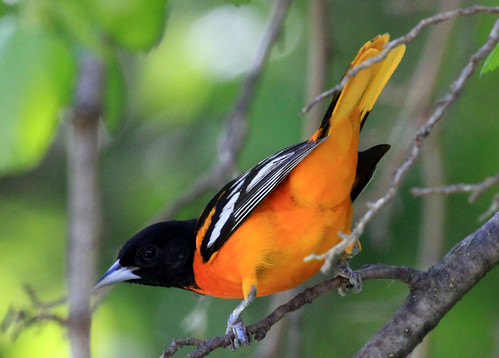As we approach the 30th anniversary of my first
For the Birds radio program on May 12, my daughter, who was 2 years old when
the show began, set up an online database so I can archive as many of my old
radio programs as possible. So far I’ve archived more than 10 years of the most
recent programs on the database—that’s 1,124 individual programs—and I’m
missing the files for three more. Many of my oldest original tapes were erased long
ago, but some turned up at KUMD, and Christine Dean digitized them for me. Those
will be the next ones I enter into the archive, and then I’ll work on programs
I have on cassette tape from the 80s and 90s. All the archived programs are available at http://www.lauraerickson.com/radio/
| Wisdom the Laysan Albatross |
When I started “For the Birds,” Wisdom the Laysan Albtross
was at least 35 years old, but no one was singling her out from the many
albatrosses on Midway Island. Her Fish and Wildlife Service leg band had
already been replaced a couple of times, but no one followed the paper trail to
realize she’d been banded as an adult in 1955. In 2011, Chandler Robbins, who
originally banded her, traced back her bands and realized she was at least 60.
That’s when she made national news and I first did a program about her.
Going through the programs one by one has been both fun and
disconcerting. Some were timely—about upcoming birding events, current
migration conditions, news items, and other such things. Some are woefully out
of date, like my recommendation for National Geographic’s “Handheld Birds”
program for Palm Pilots. Some have serious issues with sound quality,
especially the ones I recorded from my Veracruz hotel room when I was at an
ornithological conference in Mexico.
Since starting the program in 1986, a lot of bird
names changed—what were Rock Doves then are now officially Rock Pigeons. Three years
before “For the Birds” started, the AOU changed the Common Gallinule’s name to
the Common Moorhen: it went back to Common Gallinule in 2011. I grew up with
Baltimore Orioles, but they were lumped into Northern Orioles the same
year that the gallinule got switched to a moorhen. I interviewed the ornithologist from the AOU whose Ph.D.
research was responsible for lumping the Baltimore and Bullock’s Orioles into
the Northern Oriole in the first place—he was on the AOU committee that made
the later decision to split them again, based on DNA information. I haven’t
made it far enough back in the programs to find that one yet.
Some of what we thought was basic bird information has
changed as research methods have evolved, particularly in tracking birds to
learn more about migratory routes. We’ve also learned about more and more species that may mate for life or
for a season, but display a lot of soap-opera-like outside relationships. The only species I
know that has been thoroughly tested genetically to establish that there was no fooling around of either the male or female and absolutely no multiple paternity in broods is the Florida Scrub-Jay—I found out about that when I was
working at the Cornell Lab of Ornithology in 2008. I’ve maintained all along
that as a group, birds are easily as intelligent as mammals—more and more
scientific studies are affirming that.
My warnings regarding lawn pesticides and climate change, my concerns about the protections we need for public lands, and my pleas for water and energy conservation have stood the test of time. My predictions about bird flu and West Nile virus—that they weren't dire emergencies but straightforward problems—has also proven correct, though I'm not sure we've done enough to improve conditions at the overcrowded poultry farms where bird flu originated. With regard to blastomycosis, salmonella, and botulism, I’m glad that I spent so much time from the beginning emphasizing how important it is to keep feeders clean, especially during winter and early spring thaws.
I take a lot of pride in accuracy, but in reviewing these old programs I've found some mistakes. I’m compiling a list and will soon have a program to set some of those straight.
My warnings regarding lawn pesticides and climate change, my concerns about the protections we need for public lands, and my pleas for water and energy conservation have stood the test of time. My predictions about bird flu and West Nile virus—that they weren't dire emergencies but straightforward problems—has also proven correct, though I'm not sure we've done enough to improve conditions at the overcrowded poultry farms where bird flu originated. With regard to blastomycosis, salmonella, and botulism, I’m glad that I spent so much time from the beginning emphasizing how important it is to keep feeders clean, especially during winter and early spring thaws.
I take a lot of pride in accuracy, but in reviewing these old programs I've found some mistakes. I’m compiling a list and will soon have a program to set some of those straight.

